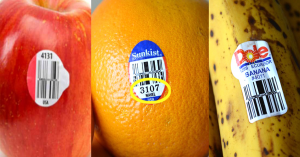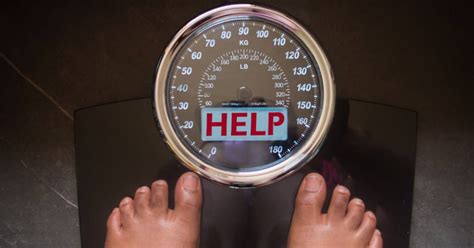As someone who has worked as a checkout clerk in a grocery store, I know all about how things work in a store. And robots of many kinds are now a part of the grocery experience. Even non-food stores are seeing the advantage of using robots and self-checkout machines. While it’s true that it means fewer jobs in some areas of the store, it can also free up more workers for more customer service. Grocery stores are almost always shorthanded.
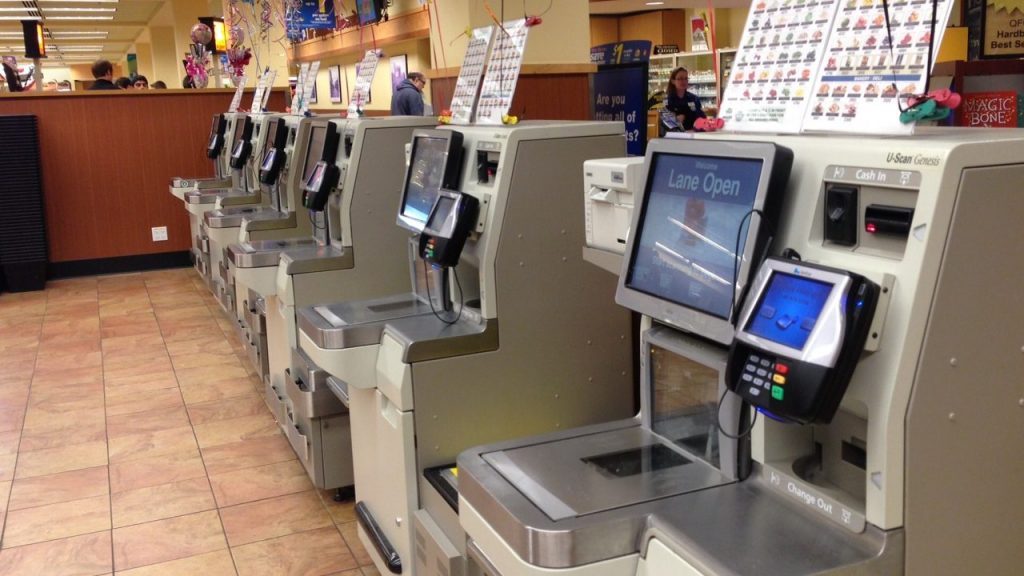
Not For Everyone Or Everything
Self-checkouts should only be used for small, quick orders. If you have a complicated transaction or a cart full of groceries DO NOT go to the self-checkout no matter how long the regular checkout lane lines are backed up. Most of the time, that line will move quickly because experienced checkers have the knowledge to move orders through quickly and handle a variety of transactions. Meanwhile, a customer needing assistance will hold up the line for a long time.
For example, when I was working the self-checkout station, it was always so upsetting to see people with a full grocery order try to check out at the self-check machines. First of all, the mechanics are all wrong. There is no belt to load your groceries on. You have to take each one out of your cart, scan it, and place it in the bag. Then, when you’ve filled the bag, you have no place to go with them because the machines use weight to determine that everything is checked out and not just thrown into the bag. It’s a security measure that not all stores use because it slows the flow of customers down so much.

Experts say anyone with more than 10 items should skip the self-checkout and hit the regular checkout lanes. The line may be long, but checkers do as much as they can to move the customers through as fast as they can.
No Verification Items, Like Alcohol
The primary thing that slows down the Self Checkout lane is age verification for alcohol purchases. Most stores require that birthdates be entered into the register/computer to ensure the purchase is legal. Usually, only one clerk is monitoring the self-checkouts and helps customers with problems. That can really slow down the line, especially on a holiday or other occasion where folks are buying lots of alcohol.
Make Sure It Will Take Your Payment
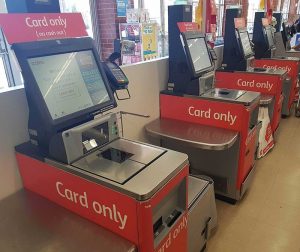
In order to speed up the checkout process and lower the overall cash needs of the store, many of them have made some self-checkout machines cashless. They only take debit or credit cards. Also, many stores have rewards programs that the machines cannot deal with due to programming problems. If you don’t have the right payment method, you’ll have to do it all over again at another machine, if available, or go to a regular checkout lane. That leaves the attendant on duty to clear the order off the machine so the next customer can begin checking out their order, further delaying the line of customers waiting.
Use The Retractable Scanner For Heavy Items If Available
Many self-checkout machines have detachable scanner heads that can be removed to scan large or heavy items in your cart without you having to wrestle the item up onto the scanner plate on the machine. Not all machines have this feature, but if it does, make use of it and keep those heavy items in the cart. Sometimes, the attendant will ask a customer to put a sticker on the item so they know it has been scanned and therefore paid for.
Know Your Produce Codes
No one expects the average customer to know all the produce codes. Even experienced checkers may not remember the code for rarely sold or unusual items. Over time, most checkers get to memorize most of the codes, certainly the ones they use often. Most produce is supposed to have a code sticker attached, but not all items do. And sometimes, due to the surface of the fruit or vegetable, a sticker won’t hold or the size makes it impractical (just try to put a sticker on every grape in a bunch).
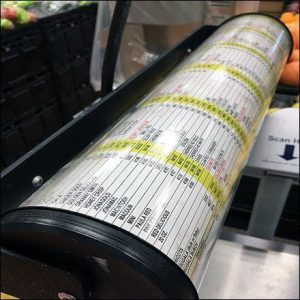
Usually, there is a way to look up the code. At the checkout register, there is usually a “lookup” function. Also, many stores have printed code lists at the registers and the self-checkout machines but it can be difficult to find what you need. For example, you won’t find starfruit on the produce code list. That’s because it’s actually called a carambola. In fact, many of the more exotic produce will have hard-to-find codes.
Self-checkout programmers have thought of that by putting popular items like produce or bakery items (can’t put a sticker on a donut) in a picture menu on the machine’s screen. It will take you through ever-narrowing lists until you get to what you want. But be careful, because if you guess that’s what you want, you might be overcharging yourself. Anytime you have a question, ask the attendant for help.
Another idea is to take a picture of the code from another piece of the same item or a picture of the price sign. It usually will have the code on it somewhere. Any of these strategies will help speed up your grocery experience.
Stay Calm, Ask For Help, Or Go To A Regular Checkout Register.
I have seen it so many times. A customer has trouble figuring out the self-checkout machine. Usually, this is due to the customer simply not following the instructions from the machine. The machine then gets stuck and requires an attendant to get it working again. Sometimes, even that doesn’t work and the machine needs to be shut down and restarted or to wait until technical help is available.
The machine is designed for those who are less familiar with computers and similar machines. It tells you exactly what to do, step by step. Yet, many people think they are smarter than the programmers and try to treat the machine the way they would a person checking out their groceries. As an attendant, I have frequently had to explain that you have to do this before the machine will let you do that. Don’t anticipate what the machine will ask for next, you’ll probably be wrong. Then the attendant has to step in and fix the problem, once again slowing down the line. Just follow the directions and it will be fine.
When In Doubt, Go To A Human Checker
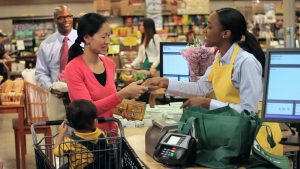
Thankfully, humans are much more adaptable than machines. That’s why the regular checkout lanes are often the better choice. A checkout clerk can adapt to you giving them something before they need it. The checker will just set it aside until the end when it will be needed. Coupons are an example. They must be entered at the end. Most coupons are scannable so the register can check to make sure the item the coupon is for really has been purchased.
So, to review:
1) Only use the self-checkout machines if you have a small order.
2) Do not use self-checkout if you have anything needing verification, like alcohol.
3) Don’t use self-checkout if you are splitting your payment.
4) Don’t use self-checkout if not using a credit or debit card, such as EBT, rewards programs or cash.
5) Know the codes of produce you buy or go to a regular checker.
6) Even if you are familiar with the self-checkout machines, follow the directions they give you. Be patient and remember that machines can’t really think.
Self-checkout can be great for quick, small trips to the store. They can save customers a lot of time. Not only will you get out of the store faster, but using the machines will free up other checkers for processing orders at the register for other customers. But remember that the machines can’t do everything and are not as versatile as a human checker. Stores are using these more and more because it saves them money and can help make the shopping experience better, more convenient, for customers.
